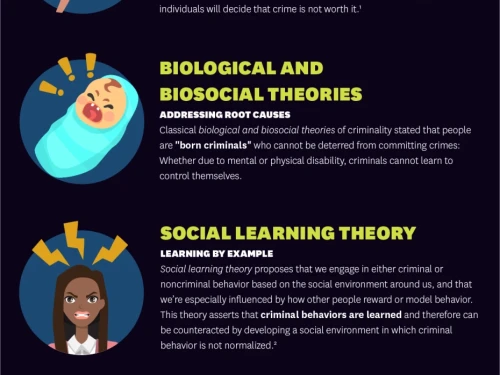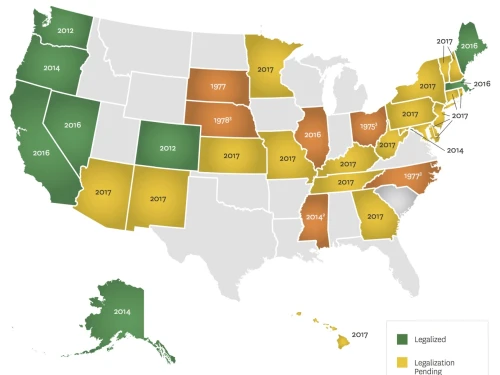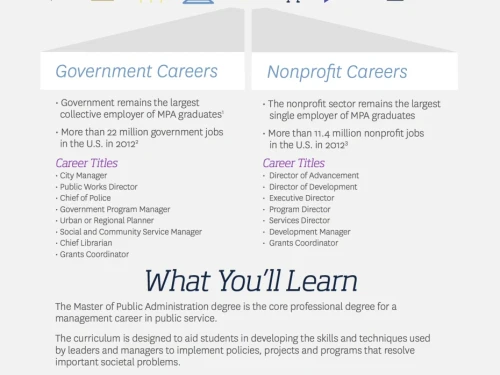Public Policy
Explore the impact of public policy and administration with these resources from the Kent State Online blog, covering topics like career opportunities with an MPA, differences between public policy and administration, and the role of technology in the public sector. It explores public health, nonprofit influence on policy, and key legislative debates, providing insights for those pursuing impactful careers in government, nonprofits, and public service. With flexible, high-quality education, Kent State prepares future leaders to shape communities and drive meaningful change.
Related Blog Posts
Balancing work, family, and personal commitments while pursuing a graduate degree can feel overwhelming for professionals looking to advance their careers in public service. However, with Kent State University’s 100% online Master of Public Administration (MPA) program, achieving your career goals is not only possible but also convenient and flexible.
In today’s complex and evolving landscape, public service professionals are needed more than ever to address societal challenges, shape policies, and lead organizations that serve communities effectively. Whether your passion lies in government, nonprofit management, or the private sector with a focus on public service, a Master of Public Administration (MPA) can be your key to unlocking a wide range of leadership opportunities.
Public service is a broad field that encompasses both government agencies and nonprofit organizations, each playing a crucial role in addressing societal needs and improving communities. Although both sectors aim to serve the public good, they operate under distinct models that shape their impact and leadership challenges.
There are many reasons to choose to pursue a career in the public sector rather than in the business world. Often, people are drawn to public or nonprofit careers because doing so gives them an opportunity to do good and enact change for the better.
Pursuing a graduate degree usually means a big payoff for your future but it can feel counterintuitive to take off a whole year or two from your career. That’s where part-time degree programs come in. Earning your degree as a part-time student means you can continue to work while you gain relevant skills to move your public sector career forward. But there’s more to it than just avoiding a break in your resume.
When you think of nonprofits, what organizations first come to mind? You might initially think of Doctors Without Borders, the Bill and Melinda Gates Foundation, the Red Cross or UNICEF. According to the United States Internal Revenue Service (IRS), nonprofit organizations include any organization that is not organized or operated for the benefit of private interests, and does not promise any net holdings to the benefit of any private shareholders or individuals.1
If you’re looking for a graduate degree that could help you on your way to establishing yourself as a leader in a compelling field, have you looked into the Master of Public Administration (MPA)? While it might not be as common as its private sector counterpart, the Master of Business Administration (MBA), it can help you build comparable skills for leadership in nonprofit organizations, the government as well as many for-profit businesses.
In 1996 Congress passed the Prison Litigation Reform Act (PLRA) to decrease the instances of litigation brought to the courts from incarcerated people. For the 25 years since the PLRA was signed into law by President Clinton, prison reform and advocacy groups have challenged the act as another obstacle to justice for the nearly 2.3 million prisoners in the U.S.1, specifically by denying equal access to the courts of the United States.
As with jobs in all industries, jobs in the public sector have certain advantages and disadvantages. While each person might have their own opinion of what constitutes a positive or negative aspect of any career, read on for our take on the pros and cons of working in the public sector.
If recent newspaper headlines are to be believed, many people are wondering if the U.S. government is getting too large. While it’s true that over 15% of the workforce is involved in the military, public and national service, the size of the U.S. government proportionate to the total population has actually shrunk in the last 50 years. Beyond that, we’re facing an aging government workforce, of which one third will be eligible to retire by 2025.1
Public sector government agencies are present in every city and town around the world, with employees undertaking a wide variety of projects aimed at improving their local community. These involve things like health and safety, transport infrastructure, parks and recreation, sewage and water, schools, hospitals and municipal buildings. As a public service, these agencies rely on government funding and, in many cases, don’t have access to the same high budgets that private sector companies have.
Before you commit to an advanced degree such as a master’s of public administration, it’s important to consider whether it will be worth the investment of your time and money. For some people, an MPA program can be a life-changing experience that prepares them for professional success and greater personal fulfillment. For others, an MPA may not be the right choice.
It’s easy to think of technology as flashy and fun: the newest TikTok video, the latest virtual background, the most thrilling special effects. Though we may not realize it, technology also plays an enormous role in the progress and achievements of the public sector.
As noted elsewhere on this site, “Broadly speaking, the public sector refers to any part of a state or national economy that is tied to public programs or services and is controlled by the government.” You may find public sector employment opportunities in the military, law enforcement, organizations managing infrastructure (public roads, bridges, tunnels, water supply, sewers, electrical grids, telecommunications, and so on), departments of public transit or public education, and in healthcare and the government itself.
Many companies hire MPA graduates knowing that the skills they’ve acquired are as valuable in the for-profit sector as they are in the government and not-for-profit worlds. Among the many companies likely to hire MPA graduates, these 10 stand out.
When you think of “public administration,” you may envision managing budgets for a city transportation department or improving the efficiency of a town’s public health division. But for graduates with a master’s degree in public administration, there are many career possibilities that might not come to mind right away. A public administrator plans, organizes, directs, coordinates and controls operations in a government office, private company or nonprofit organization. This can be in positions as diverse as that of a community health director or the budget director at an environmental justice nonprofit. An MPA opens a world of opportunities.
Careers in government and public administration often attracts idealistic people who want to make a difference in our democracy and in the lives of their fellow citizens. But what does it actually take to become a leader in bureaucratic structures at the municipal, state and federal levels?
There are many reasons to choose to pursue a career in the public sector rather than in the business world. Often, people are drawn to public or nonprofit careers because doing so gives them an opportunity to do good and enact change for the better, rather than just increasing profits for a corporation. But even if you know you want to work in government or at a nonprofit organization, the exact path you follow can vary greatly.
If you enjoy leading others, improving systems, overcoming complex challenges and helping shape the direction of a business or organization, you might be a good candidate for the role of director of administration.
“What does a public administration salary look like?” The path to public good is a personal one, but odds are nearly every person entering the field wonders what kind of salary they can expect. When you think about public administration your mind may automatically drift toward thoughts of government and nonprofit roles, but there are lucrative roles in the private sector as well. What you do with your degree and experience is entirely up to you. You could find roles in government service, nonprofit organizations, or the private and public sectors. Below, we’ll explore roles in each of these categories and discuss the potential public administration salaries for various careers.
When life feels unpredictable, most people want a plan for certainty. That’s especially true when it comes to making decisions about careers and weighing the pros and cons of graduate school. While no crystal ball will predict exactly what jobs will exist in the global economy in the years and decades ahead, authorities suggest that lifelong learners will have the advantage in getting hired and promoted.
What is criminal behavior, and what causes it? How a society answers these fundamental questions plays an essential role in how it responds to crime, from developing crime prevention programs to designing incarceration systems and rehabilitating criminals. As part of this effort, criminologists and experts across related fields such as healthcare, sociology and psychology work toward an understanding of the causes of criminal behavior, both by proposing new theories and testing existing ones.
In a campaign event at Madison Square Garden in 1912, future President Woodrow Wilson said something that could be considered a mission statement for his life’s work: “There is no cause half so sacred as the cause of a people. There is no idea so uplifting as the idea of the service of humanity.”1 After living a life devoted to the public, both in practice and as a scholar, Wilson was uniquely qualified to discuss matters of public service. Twenty-six years earlier, Wilson had published “The Study of Administration,” an essay that served as the foundation for the study of public administration, and which caused Wilson to be enshrined as the “Father of Public Administration” in the United States.
Learn about NASPAA accreditation and why it’s an important accreditation to have for most MPA programs.
Imagine a town that wants to improve access to its public buildings. Theoretically, the citizens of the town could appeal to their elected officials for the change and maybe vote on a ballot measure. Once that measure has passed, officials could craft a policy addressing the need for improved access, and then allocate the funds...and then things get a little tricky.
Severe punishments for drug-related offenses—particularly possession of marijuana—have historically triggered global public outcry, causing many nations to rethink their approach to the applicable drug laws.
It should come as no surprise that over 80 percent of adults in the United States use the internet.1 In fact, over half the world’s population owns a smartphone—a technology that relies exclusively on broadband for many of its primary functions.2 So, with the proliferation of internet usage being what it is, you’d expect that a similarly high percentage of citizens have access to affordable and reliable internet.
It’s no secret. The public’s confidence in the government is on the decline. In fact, a stifling 76 percent of citizens believe that political corruption is a critical problem facing us today. According to Kent State University professor Mark Cassell though, “When we talk about failed states, what we’re talking about is failed administrations.”
A Master of Public Administration (MPA) degree helps prepare administrative professionals for advanced positions within the public sector, government and nonprofit organizations. Explore the infographic below to learn how an MPA can help pave the way to more senior job opportunities.



























